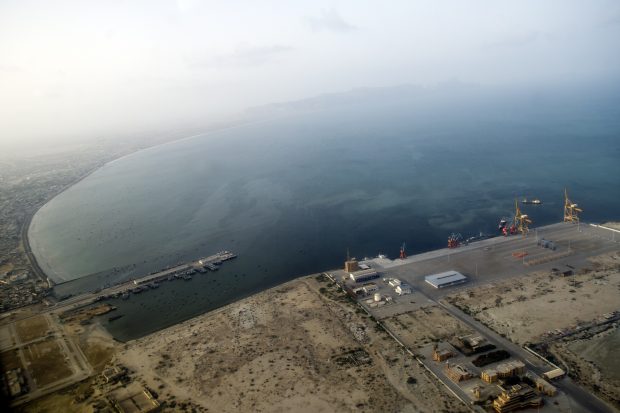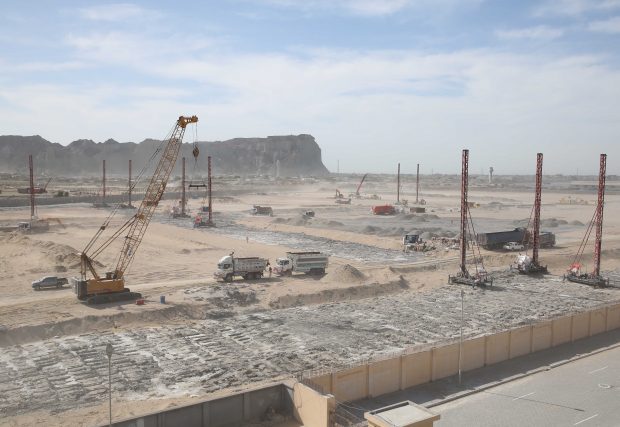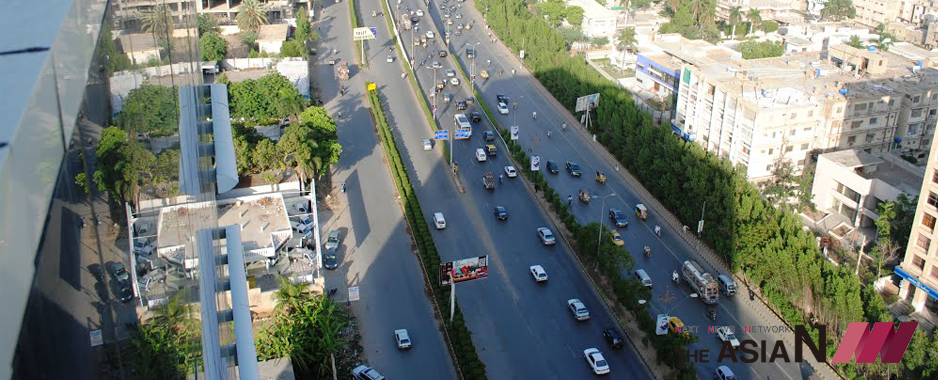
Dubai vs Gwadar: The New World Economy War

Major industrial infrastructure investments launched by the UAE government are expected to push expenditure. According to a report published by the Dubai-based Arabic Language Al-Bayan newspaper, the Dubai economy will remain the least vulnerable to future economic crises due to current investments made in the build-up to Expo 2020.
Current real estate and tourism investments as well as major infrastructure and developmental projects are expected to further consolidate the economy. Increases in demand with the 3.1 million UAE population (2017) further pushes the real estate market in Dubai and neighboring Emirates.
On any trip to Dubai, one will see building construction sites everywhere—a sign of the nation’s current success and bright future. These sites are not the result of the economy alone, but from Dubai’s tourism and culture businesses. The majority of such projects are set for completion before 2020, which is also the year Dubai will host Expo 2020.

Some bright headlines placed at the top of magnificent buildings are “Museum of the Future”, “The Bluewater’s Island”, “Dubai Frame” (where a giant rectangular frame gives visitors the best view of both old and new Dubai), “Dubai Creek Harbor”, “Dubai Water Canal”, “Dubai Theme Parks”, “Deira Island”, “Aladdin City” (a project inspired by the tales of Aladdin and Sindbad).
But will this bright fairytale surrounding Dubai continue to be true? The answer may be found on the other side of the Arabia-Persian Gulf, where the expansion of Gwadar port in Pakistan is fast becoming a game-changing venture that could potentially reformulate the economic agenda of the entire region.
Tariq al-Shammari, freelance writer for North Africa West Asia, said that “many economic analysts believe Gwadar is another Dubai emerging on the world’s map. The controversial issue here is that an economically powerful Gwardar threatens the strategic influence of Dubai in the region. This challenging point, recently has caused a silent economic war in the Gulf of Oman between two groups of countries; Pakistan, China, and Qatar on one side, India and the UAE on the other.”
Currently, Dubai’s main revenue comes from tourism, aviation, real estate, and financial services, thanks to its two major commercial ports: Port Rashid and Port Jebel Ali (the biggest manmade harbor in the world and the biggest Middle-eastern port; home to over 5,000 companies from over 120 countries).
However, al-Shammari added, “Gwadar port is a serious rival to Dubai, where its strategic location gives China and Central Asia access to the Gulf region and the Middle-east. Gwadar port will become the main sea gate for Central Asia, making it easier to send products from Xinjiang (northwest of China) and Central Asian countries to other regions”. Kashgar (China) and Gwadar (Pakistan) are only 1500 miles apart, compared to the more frequently used pathway of 2500 miles separating Kashgar from Shanghai—which is a distance that would take longer than getting to Europe. Cargo ships have to cover double the normal distance just to reach Midde-eastern waters. “The [Gwadar] corridor will help reduce transport time for goods from Gwadar port to western China and Central Asian regions by about 60 or 70 percent,” said Vice Premier of China Liu Yandong.
The Gwadar Port is a new landmark in the Silk Road Economic Belt and the 21st century Maritime Silk Road (better known as the One Belt and One Road Initiative OBOR). The Belt and Road Initiative (BRI) is a development strategy proposed by China’s Premier Xi Jinping who emphasizes connectivity and cooperation in his policies.
China took operational control of Gwadar, the deep-sea port built with financial and technical assistance from China on Pakistan’s southwest coast, after the Port of Singapore Authority (PSA) decided to pull out of a 40-year port management and development contract signed in 2007. Now, China will help operate the port, it being strategically located close to the Pakistan-Iran border and the Strait of Hormuz in the southwestern province of Balochistan.
The Singaporean firm decided to quit the Gwadar project after Pakistan’s government failed to transfer land needed to develop a free zone (as was promised under a 40-year concession signed in February 2007 during former President Pervez Musharraf’s regime). Since its official opening in March 2007, Gwadar Port has been unable to be fully operational because of the unsettled matters between Islamabad and the PSA.
The national UAE newspaper reported that “the Chinese operational control of the port will also enable the “dragon to swim in the India Ocean”, which is strategically important for China as it expands its influence across the region. To ensure the security of shipments along existing routes, a Chinese naval presence at Gwadar could also patrol the Indian Ocean sea lanes. What upsets Washington and New Delhi about this development is Chinese naval presence near the Strait of Hormuz and its strategy of building a “string of pearls” presence on the Indian Ocean rim.”
The infrastructure of Gwadar is developed to sustain heavy developments in near future. A good infrastructure speaks volume about things to come. GDA (Gwadar Development Authority) is working on development of residential and commercial areas with the increase in port activity, a lot of people will move to Gwadar looking for new economic opportunities. This in turn will increase demand of the real estate in Gwadar: Residential Societies, Marine Drive Commercial and Open Land. They will have their own Burj in Gwadar, and even a Greek City! With a glance, you could see projects mirrored to what Dubai owns!
The New World Economy War between Dubai and Gwadar; is giving the region more oil on its continuous fires, another threat to shake peace in Asia.





